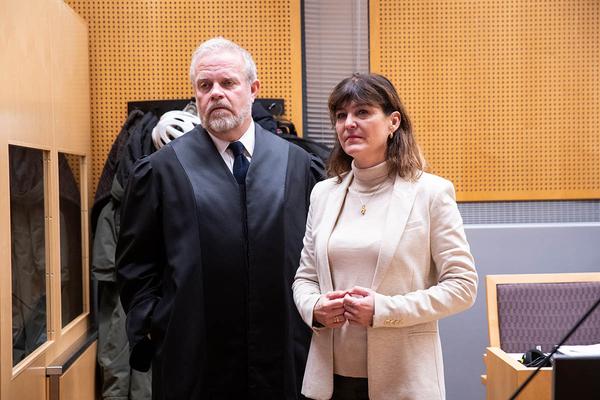27. mai 2015
The editorial product

The traditional goal of news is to say what just happened. That is, after all, what “news” means. But there […]
The traditional goal of news is to say what just happened. That is, after all, what “news” means.
But there are many more types of nonfiction information services, and possibilities that few have yet explored.
I want to take two steps back from journalism, to see where it fits in the broader information landscape and try to imagine new things. First, we have to look at the shift from content to product. News production is more than story creation; it’s also the process of deciding what to cover, the delivery system, and the user experience. Second, we need to look at algorithms. Every time programmers write code to handle information, they are making editorial choices.
Then we can begin to imagine all the wildly different editorial products we could deliver with a building full of writers and developers.
In this perspective, journalism is just one part of a broader information ecosystem that includes everything from wire services to
Wikipedia to search engines – products that serve a need for factual information. These services all use some combination of professionals and software to produce and deliver it to users.
Here are six existing editorial products that journalists and developers are already working to enhance, and six more that they could create in the future.
Existing editorial products
1. Record what just happened
This is the classic role of journalism. The city reporter rushing out to cover breaking news, what the wire service specializes in, the reporting of events and establishing the facts.
It is my sense that we usually have enough of this. Some will say there is much that is important that is not covered, but I want to distinguish between reporting a story and drawing attention to it. While social media and search engines now have the role of drawing attention to a story, actually creating the primary report is basic and valuable. Even here, in this classic role, developers have come to play an important part: data journalism is a booming specialty, covering everything from advanced data analysis to compelling interactive presentations.
2. Locate pre-existing information
This is a traditional role of researchers and librarians, and now search engines. Even when the product is powered entirely by software, this is most definitely an editorial role, because the creation of an information retrieval algorithm requires careful judgement about what a “good” result is.
As Google’s Matt Cutts said: “In some sense, when people come to Google, that’s exactly what they’re asking for: our editorial judgment. They’re expressed via algorithms.” All search engines are editorial products. That means that a search engine – or any online system that helps people find information – requires a combination of technical and cultural understanding, and therefore collaboration between writers and developers.
3. Filter the information tsunami
The act that produces your trusted information feed, whether that’s Facebook’s News Feed, Politico’s morning emails or Google News. It’s here that we most productively can complain that something “wasn’t covered.” Filtering the news depends on both automatic aggregation and human curation, because no one organization can produce original reporting on everything. As human effort can’t match the scope of a web crawler, most filtering products lean heavily on software.
Nor can a human editor prepare personalized headlines for millions of users. As with search engines, information filtering algorithms are both mathematical and editorial objects. The best products use clever combinations of machines and people. For example, Facebook uses algorithms to surface trending news articles, which humans then curate and summarize, which are then personalized for each user algorithmically in the “Trending” box to the right of the news feed.
4. Give me the background on this topic
This is a version of locating pre-existing information, but in a summarizing or tutorial form. Because there are more complex issues than anyone can follow, a lot of news is going to be about topics and events that you don’t know much about. This has been dubbed the news´context problem, and many have attempted to solve it.
Entire sites are now devoted to explanatory journalism, such as Vox. However, Wikipedia is the 800-pound gorilla, and is gathering speed. No other product can match Wikipedia’s scope, cost of production, or authority.
5. Expose the wrongdoing
This is the classic role of investigative journalism and its place in the ecosystem of accountability. Every government transparency initiative and open data nonprofit organization aspires to support this goal of absolute accountability. But transparency is not enough. Democracy needs people who are committed to exposing corruption, crime, and abuse. This can require inside sources and secret documents. It can also be about drawing attention to little-noted facts.
It often requires serious data analysis, which is another place where writers and developers collaborate – as a glance at the last few years of Pulitzer winners will show. But it is always about scandal – what has been called “the journalism of outrage.” This has sometimes made investigative journalism powerless in the face of huge systemic issues without a clear locus of wrongdoing.
6. Debunk rumors and lies
In this fairly new category, we have products like Politifact (fact checks what politicians say), Emergent.info (tracks the spread of rumors), and the venerable Snopes (collects and debunks urban legends).
It seems a little strange that this is a new kind of editorial product. Traditional news media weren’t much into debunking, and the “publish only true things” strategy may have been sufficient when there were many fewer information sources. As the internet has allowed both good and bad information to flow ever more freely, truth-testing has become a valuable public service, and journalists have learned to pay attention.
The tech world is allergic to any service which requires a lot of humans to deliver. That doesn’t scale, or so the thinking goes.
JONATHAN STRAY
Some editorial products that don’t exist yet
1. What can I do about it?
Accurate news is essential to know the world. But these news reports never tell you what you can do about it personally. Citizens have not grown apathetic. Rather, people are often overwhelmed in the face of large and complex problems. It is difficult to know where to start. We know that stories that include solutions are more engaging.
In a recent study comparing the same story with and without a proposed solution, readers who read the solution reported being more likely to share the article on social media, and read other articles on the same site or on the same issue. The main problem is one of plausible effectiveness: If you have ten dollars or ten hours to donate, where should you put your resources? Not every problem can be helped by large numbers of small actions — but some can. Writers and developers can build a whole product around the question of what the reader could do.
2. A moderated place for difficult discussions
Traditionally, journalism has tried to present an objective truth that would be seen as legitimate by everyone. I am not convinced that truth always works this way. And I am certain that no institution today has this sort of argument-settling authority today. On the other hand, I do see a need for unifying narratives.
For instance, Americans are more polarized than they’ve been in decades. They fight online about anything from catcalls to tax rates. Perhaps there is a need for a safe place to talk, in which you know the other, with real human moderators gently tending the discussion and discouraging the trolls. Now that anyone can talk, the public sphere needs fewer authorities and more moderators. To me, this seems like a natural role for journalism.
3. Personalized news that isn’t terrible
It probably seems obvious: different people want different news. This requires algorithmic recommendation to scale. The results, however, have often been unimpressive — as anyone who has complained about the Facebook News Feed knows. I have spent a lot of time with recommendation algorithms and have come to believe that this is fundamentally a user interface design challenge: How do you tell the computer what you want to see?
Optimizing for clicks and likes inevitably degenerates into clickbait and likebait. Other systems require you to select in advance the subjects and people to follow. But none of these are really satisfying products, and I still don´t have a ”mute” button for Kim Kardashian. I’m still holding my breath for an interaction design breakthrough, some elegant way to create the perfect personal channel.
4. The online town hall
Democracy is participatory in its nature – it is not enough to vote. But there is no scalable communication channel between citizens and government. So how to make your voice heard? And how hear the voices of others? How does a civil servant make sense of this deluge?
We lack good models for a “conversation” that could include millions of people. I am imagining something of a mix between Reddit and civic-listening platform PopVox. This product, too, would require thoughtful moderation.
5. Systematic government coverage
Journalism has always been on the lookout for waste and corruption. But how many stories do you read about the Bureau of Land Management? Or the Office of Thrift Supervision, which should have been monitoring the financial industry before the crash? Sometimes, it seems like journalists pull their subjects out of a hat.
If we’re serious about the notion of an independent check on government, we need to get systematic about it. So far, no one reports department by department, bureau by bureau, with robot reporters scrutinizing every single open data feed. Sound boring? Maybe. But perhaps that just means that the current accountability journalism is badly skewed by the demands of entertainment.
6. Choose-your-own-adventure reporting
Story creation could be interactive. There have been crowdfunding platforms such as Spot.us and Beacon. But nothing operates on quite the level of granularity and speed envisioned by Jay Rosen’s explainthis.org, where users type in questions for journalists to answer. There have been thousands of variations on the idea of having the users direct the reporting, from demand-driven production to a quiz after each story that aks “what should we report on next?”
The point is to put journalists and users in an interactive loop. Good reporters listen anyway, but I want something stronger: a contract with the audience where they know exactly how to be heard. For example: “Our reporter will investigate the top-voted question each week.”
What is journalism, anyway?
To ask the question of what journalism is, misses the point of what it does. And on that point, there has been a strange lack of innovation. Silicon Valley has never been afraid of wild ideas. But the tech world is allergic to any service which requires a lot of humans to deliver. That doesn’t scale, or so the thinking goes.
Meanwhile, the world of journalism has evolved and finally embraced software and new story forms. Yet the fundamental services of journalism are virtually unchanged. That is a pity. There are so many different and useful things you can do if you take a house full of writers and developers and set them to produce nonfiction.
We have barely scratched the surface.
Jonathan Stray is a former editor for the Associated Press. He is a fellow at the Tow Centre for Digital Journalism at Columbia University, where he teaches computational journalism.



